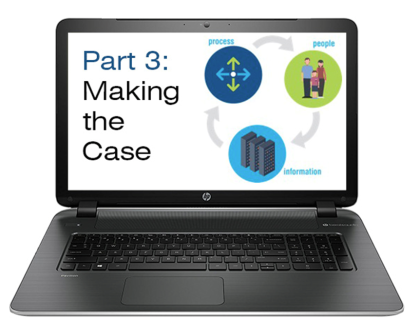Today’s Post By: Will Sellenraad, Principal, Insurance, Pyramid Solutions, Inc.
How efficiently do you process new claims that arrive by email, fax, paper and mobile?
Can your claims processors retrieve customer data across all departments in one search? What about the ability to analyze content to identify patterns of similar claims by the same claimant?

Through our work in the insurance industry, specifically with claims departments across the nation, we found that for organizations to take full advantage of their content and process claims as efficiently as possible, they need the following must haves:
- Capture with cognitive recognition for claims applications and supporting content (photos, tickets, hospital bills, etc.)
- Protect the content and valuable customer information
- Business Rules to activate automatic workflows and reports
- Analytics Dashboard for real time KPIs to meet your SLA’s and more
- Engaged content for greater collaboration between agents, members, and claims workers
The core technologies that support these must haves are advanced capture, dynamic case management and your claims system of records. From our experience, content is 20% of the claims processing that causes 80% of the exceptions.
If you have smarter content, you’ll have the tools to help process claims smarter. I invite you to watch our 10 minute on-demand webcast to learn more about the five ways to act on claims content. You’ll also hear how previous clients like the Great American Insurance Group streamlined content and processes and positioned themselves as leaders in the industry.
If you missed parts 1-3 of our Smarter Content, Smarter People, Smarter Claims Processing- don’t worry, you can view parts 1-3 here.








 in real time, insurance organizations have a major opportunity to leverage video to improve claim accuracy, shorten processing times, and reduce fraudulent claims.
in real time, insurance organizations have a major opportunity to leverage video to improve claim accuracy, shorten processing times, and reduce fraudulent claims. The rise in the use of drones is only going to increase this trend. Drones can be incredibly useful in obtaining hard-to-get data. Using a drone to capture footage of building damage delivers a better angle and reduces the chance of employees and policy holders doing additional damage, or injuring themselves climbing ladders and clambering over rooftops. Accident scenes become easier to document and measure through analytics. Drones enable easier initial property surveys and make ongoing monitoring easier than ever before. In the event of a large-scale catastrophe, drones will soon be invaluable for conducting post-catastrophe surveying, triaging the damage, and planning personnel deployments effectively.
The rise in the use of drones is only going to increase this trend. Drones can be incredibly useful in obtaining hard-to-get data. Using a drone to capture footage of building damage delivers a better angle and reduces the chance of employees and policy holders doing additional damage, or injuring themselves climbing ladders and clambering over rooftops. Accident scenes become easier to document and measure through analytics. Drones enable easier initial property surveys and make ongoing monitoring easier than ever before. In the event of a large-scale catastrophe, drones will soon be invaluable for conducting post-catastrophe surveying, triaging the damage, and planning personnel deployments effectively.
